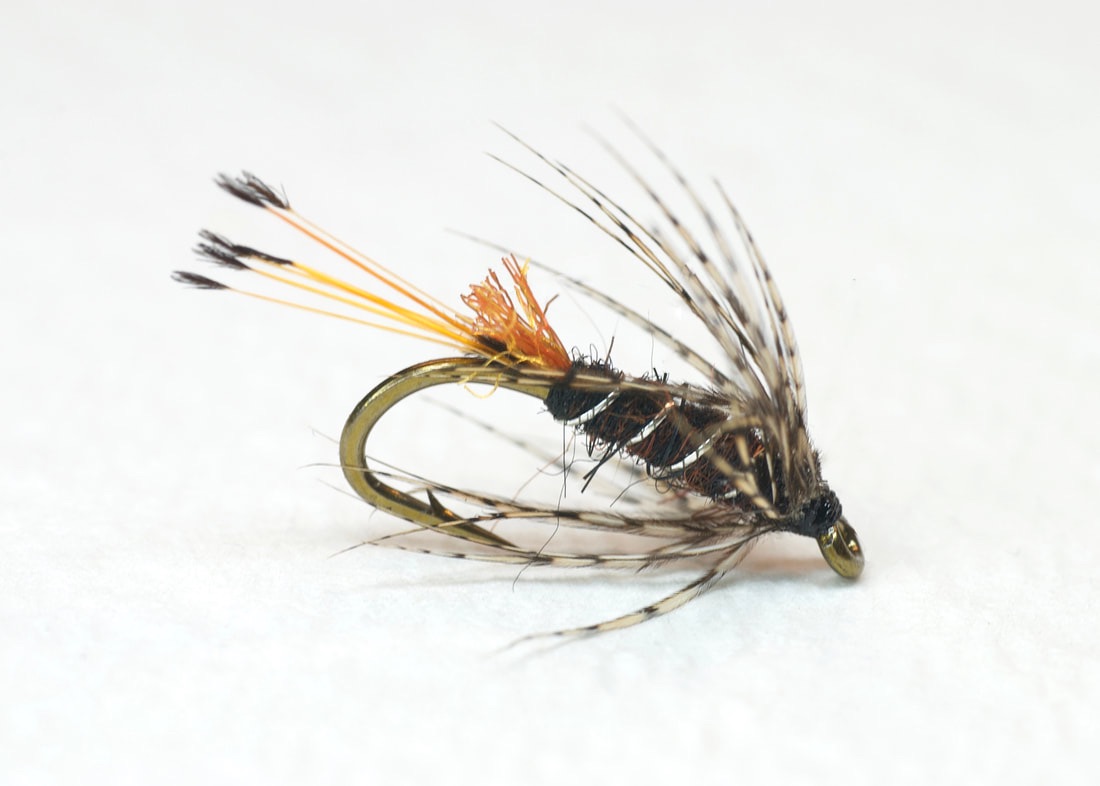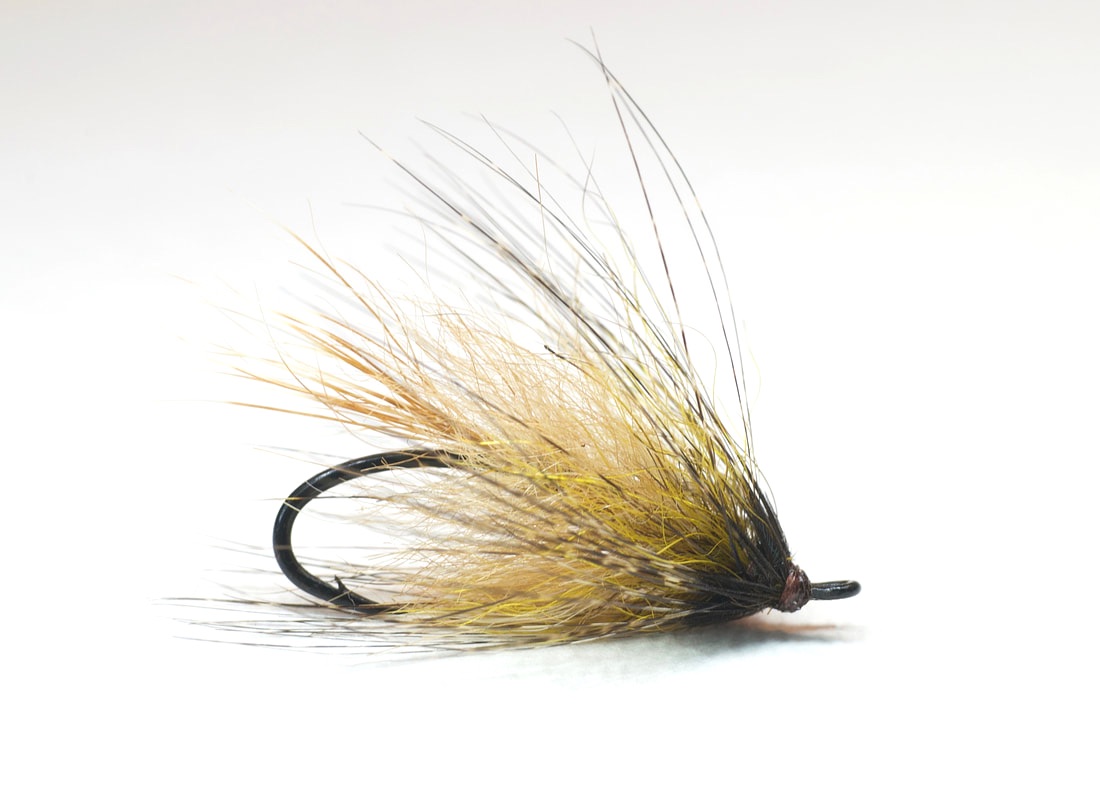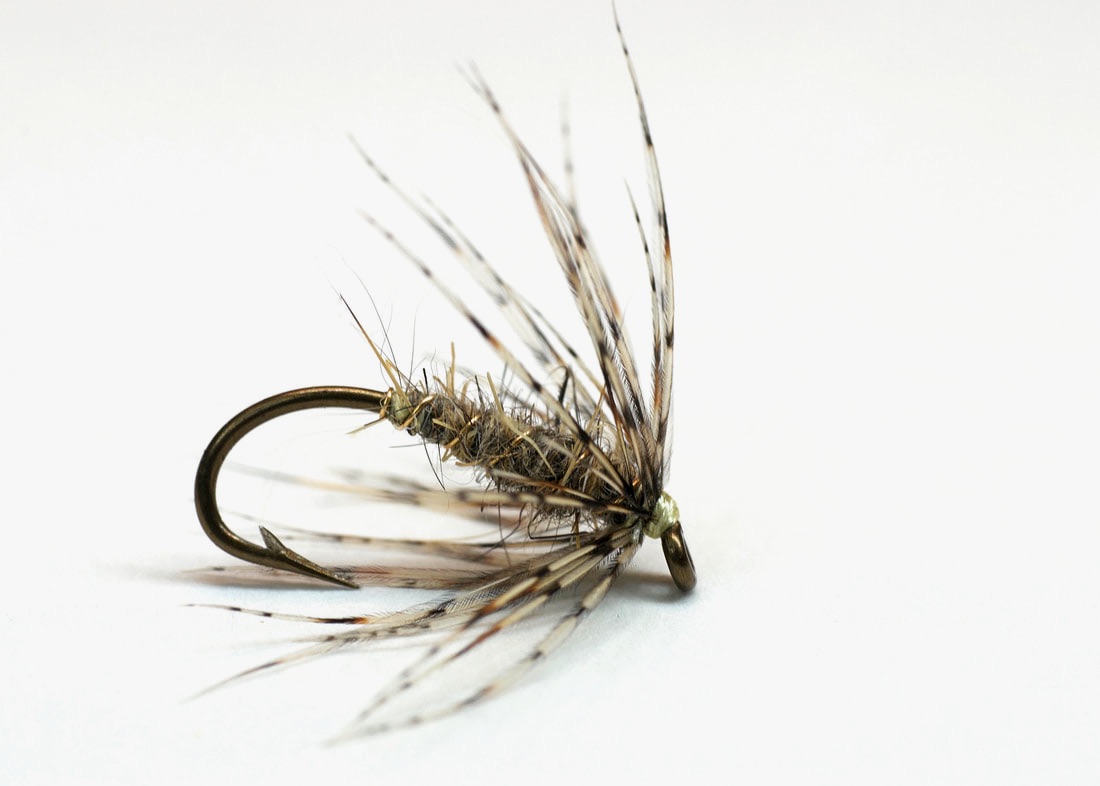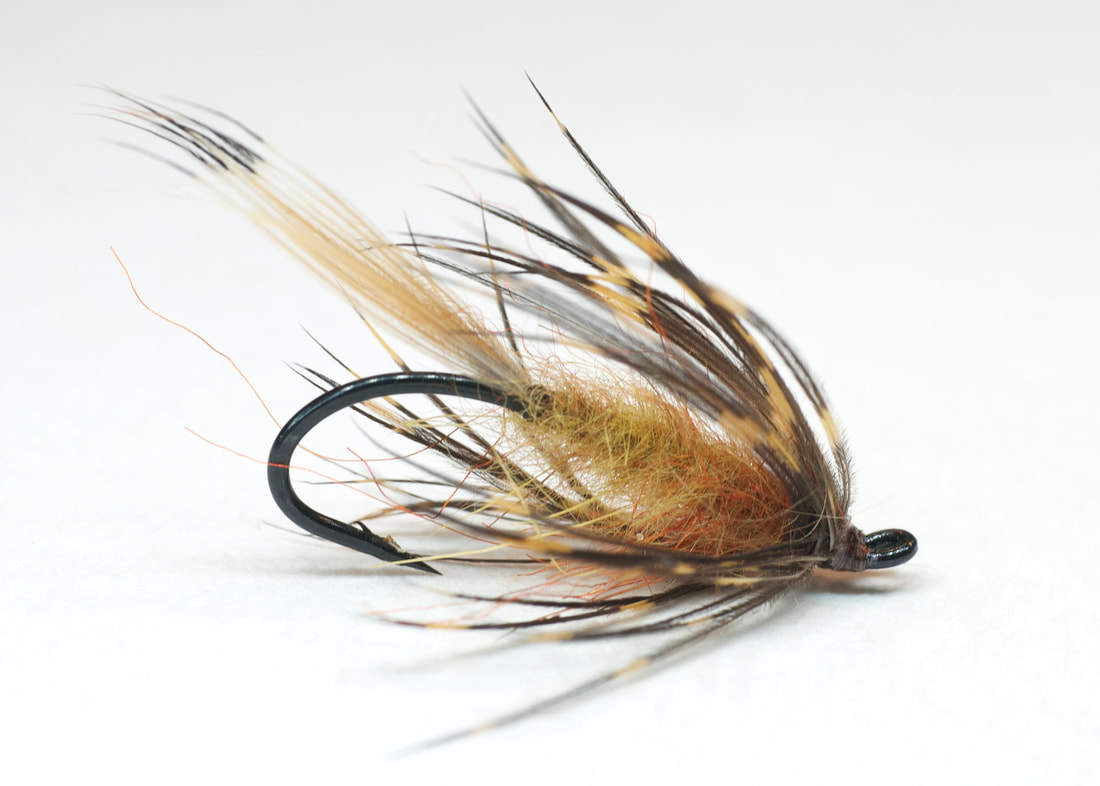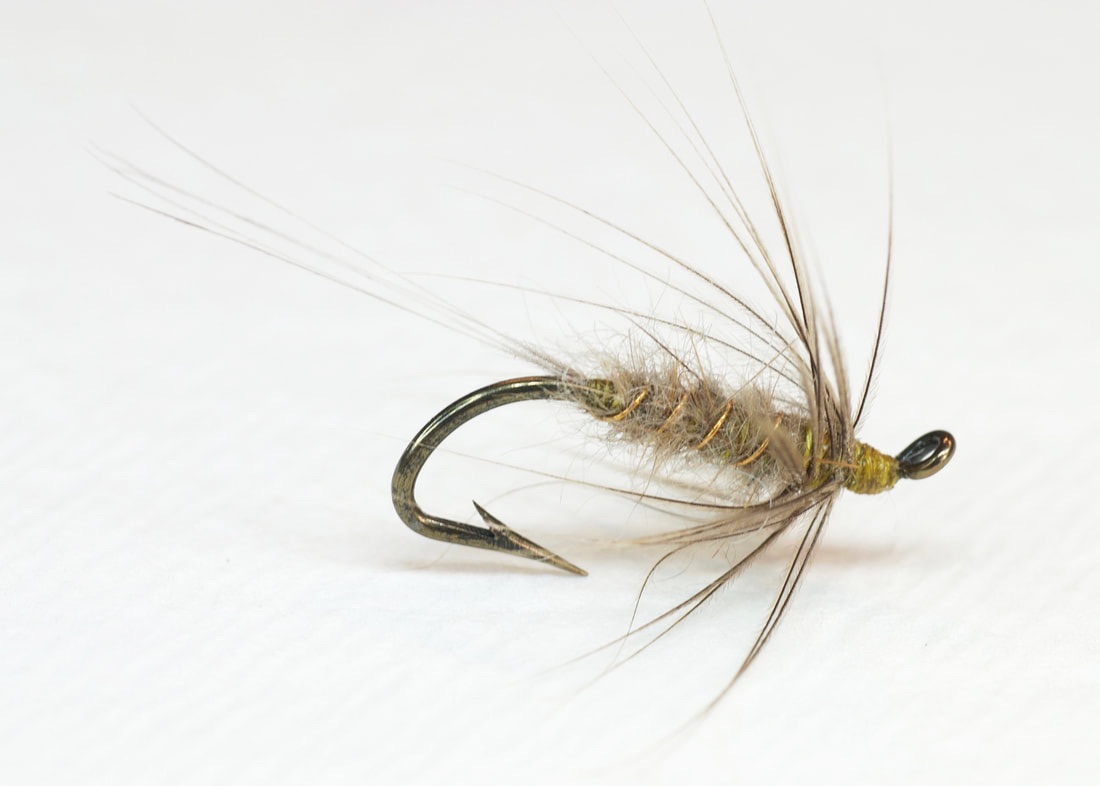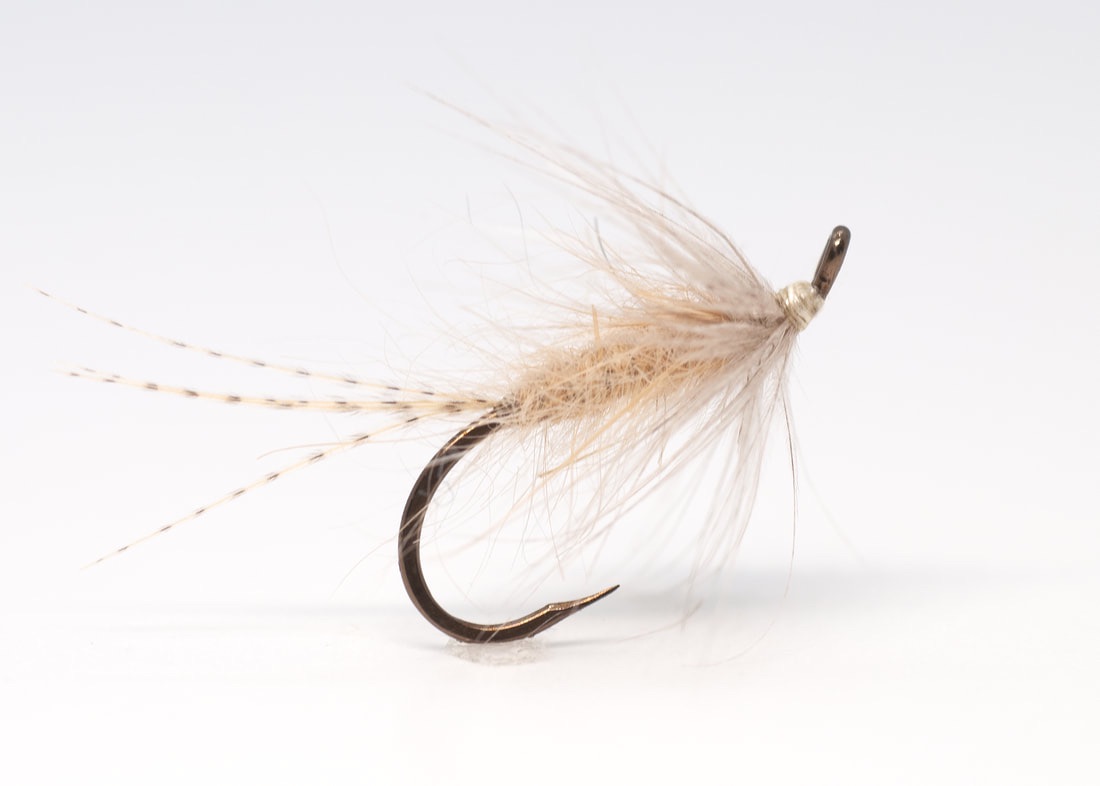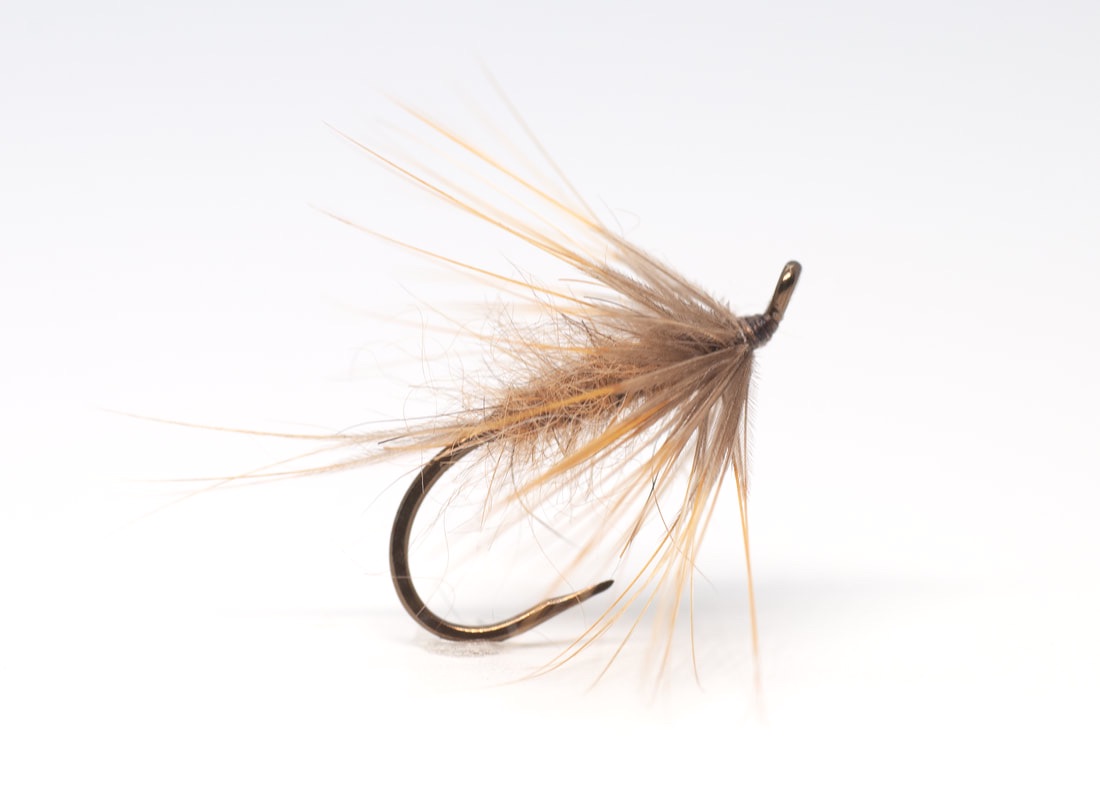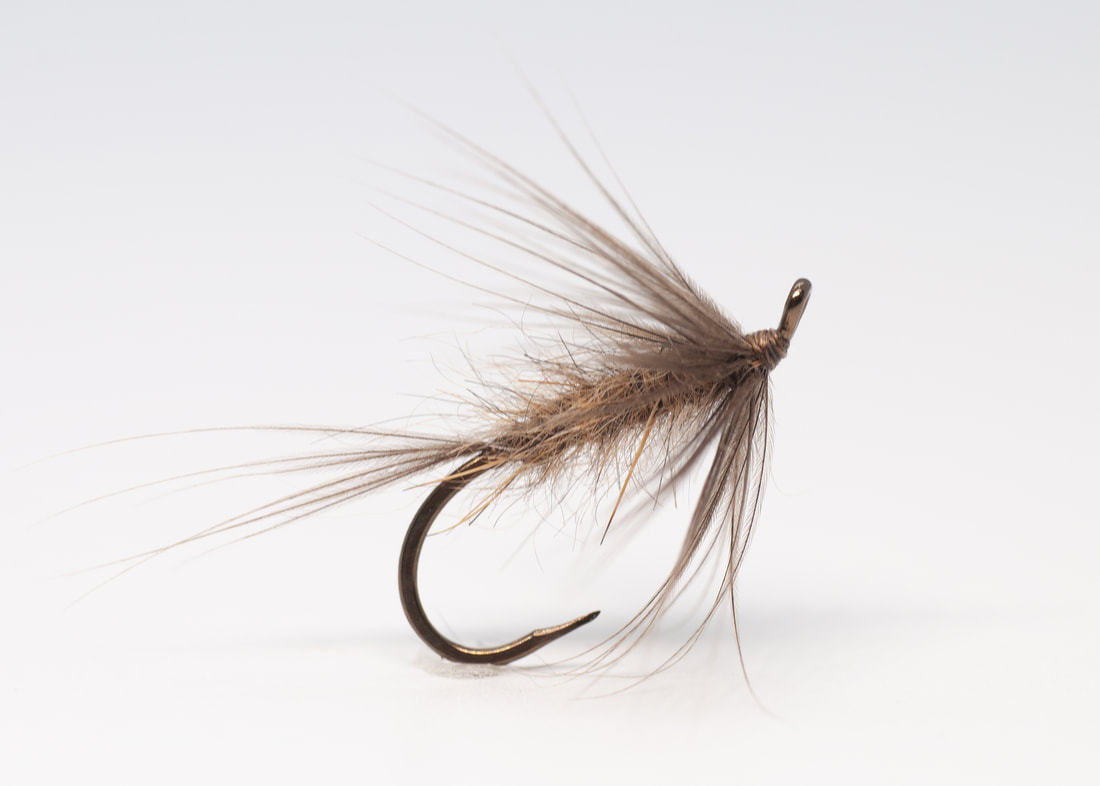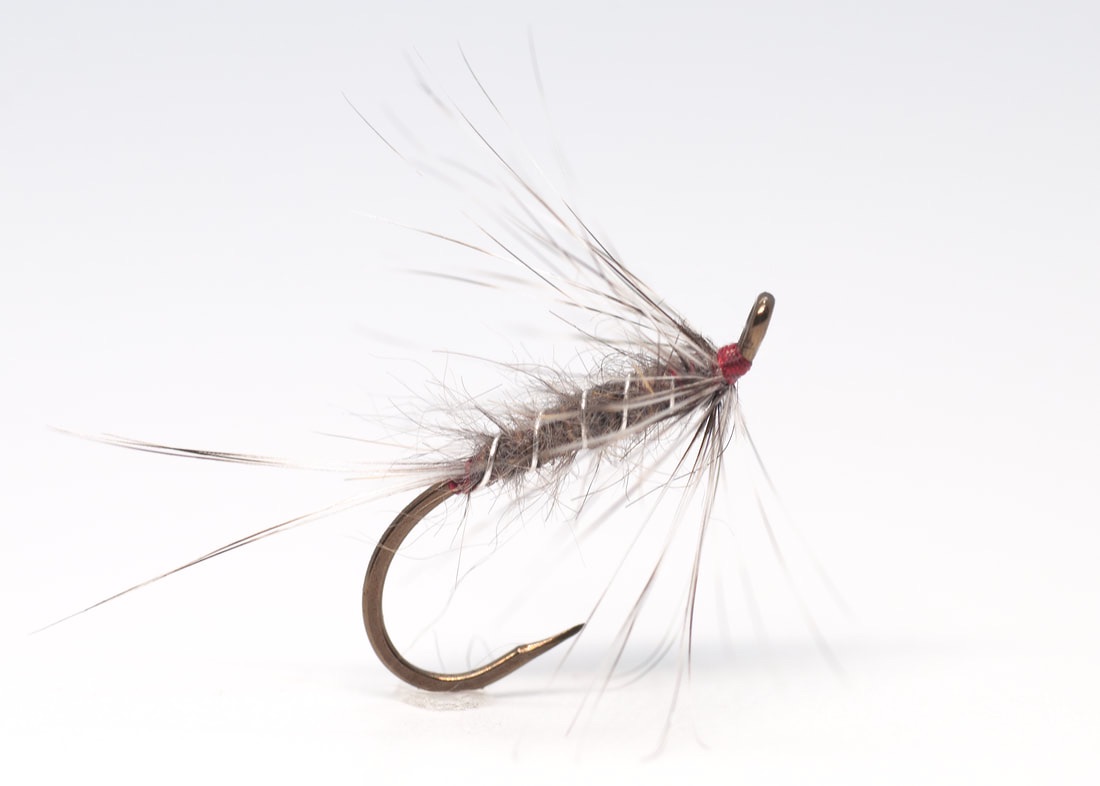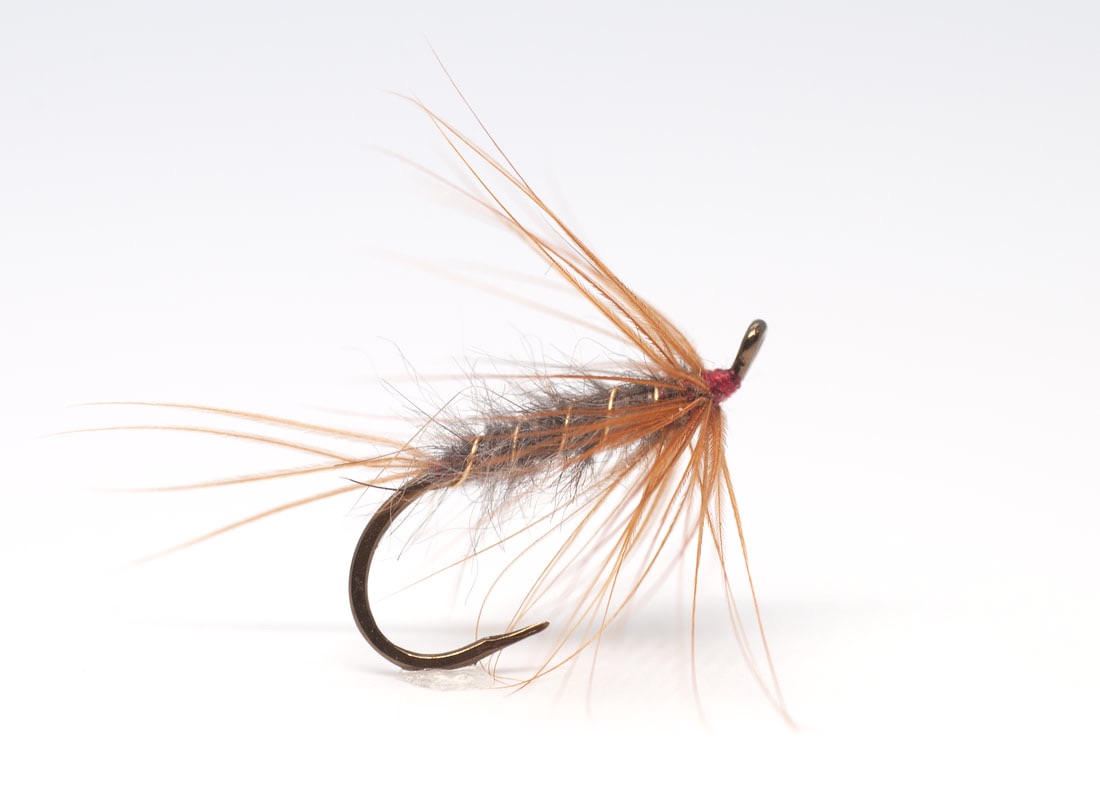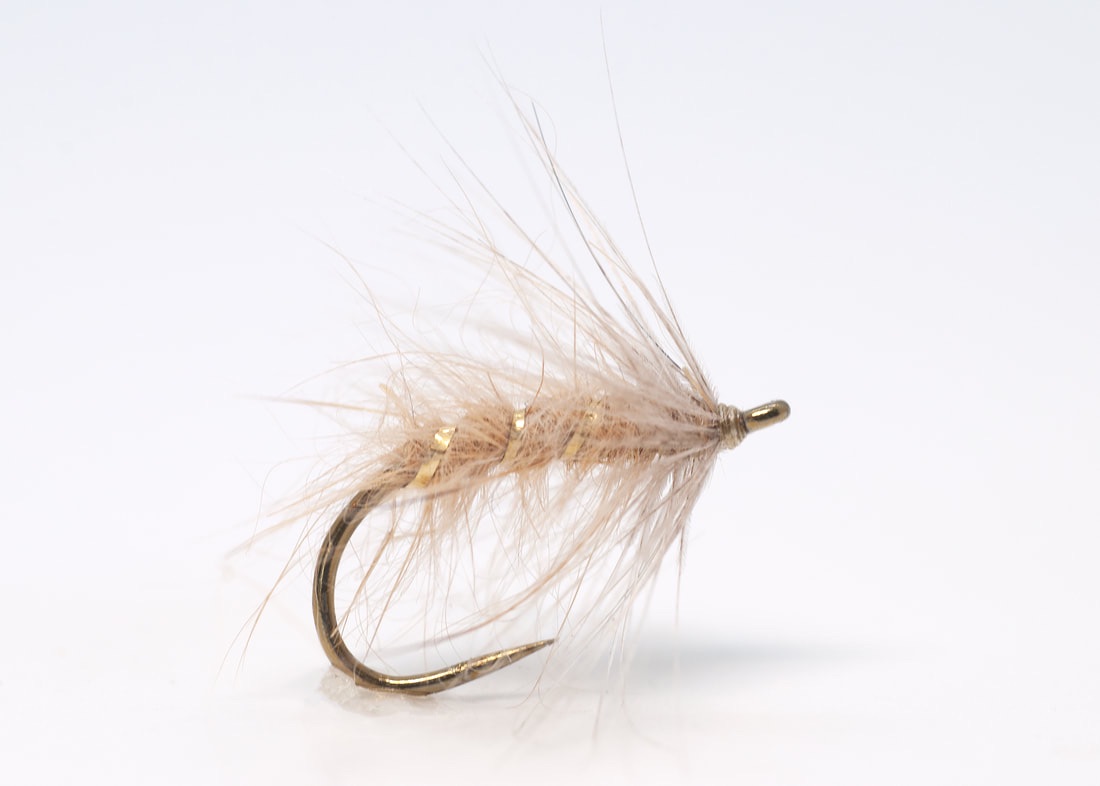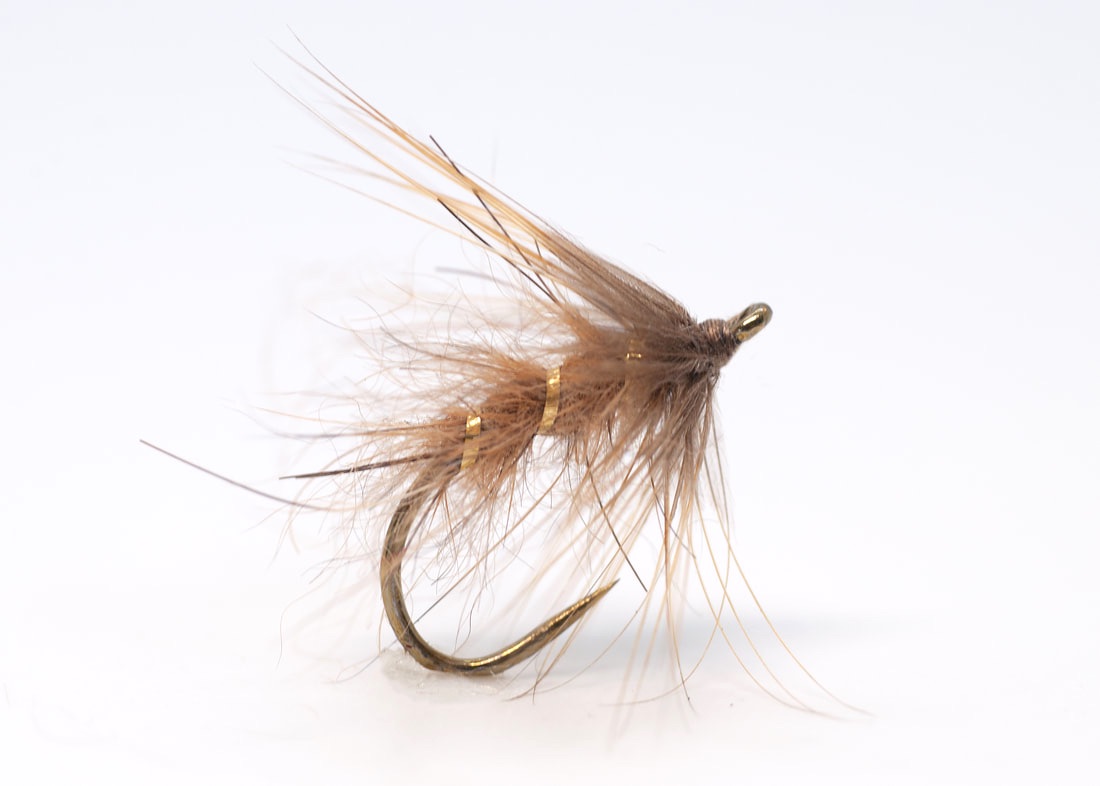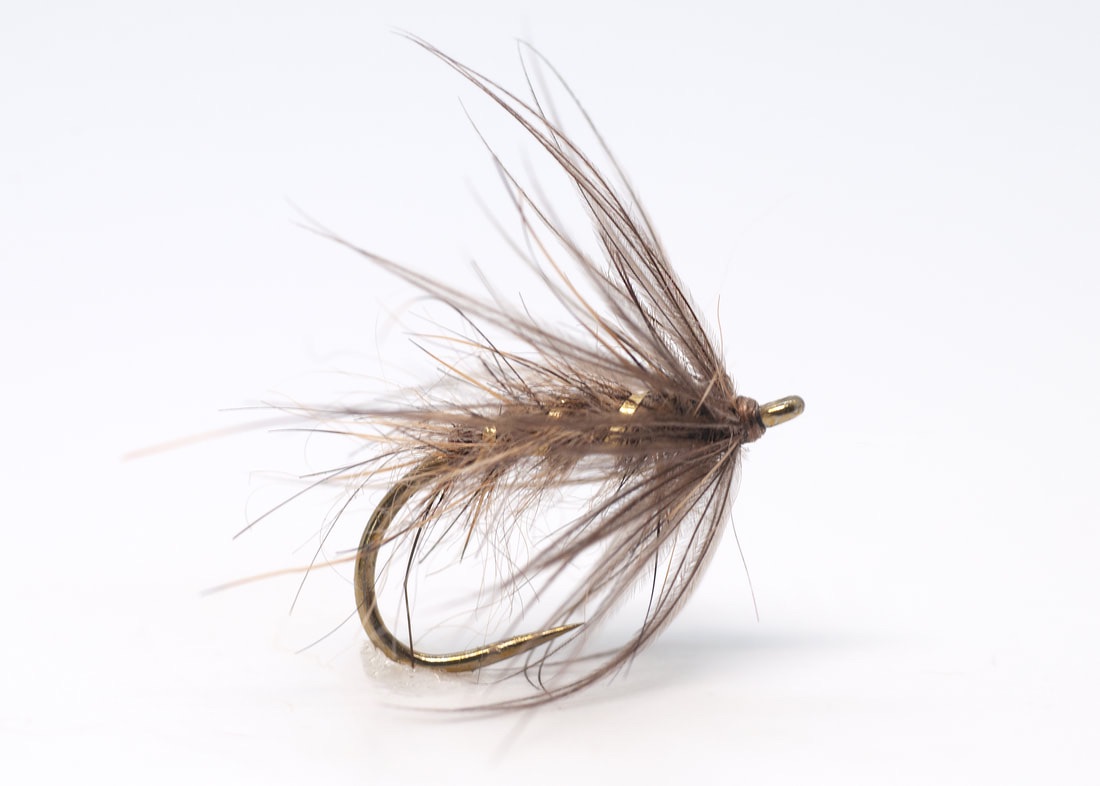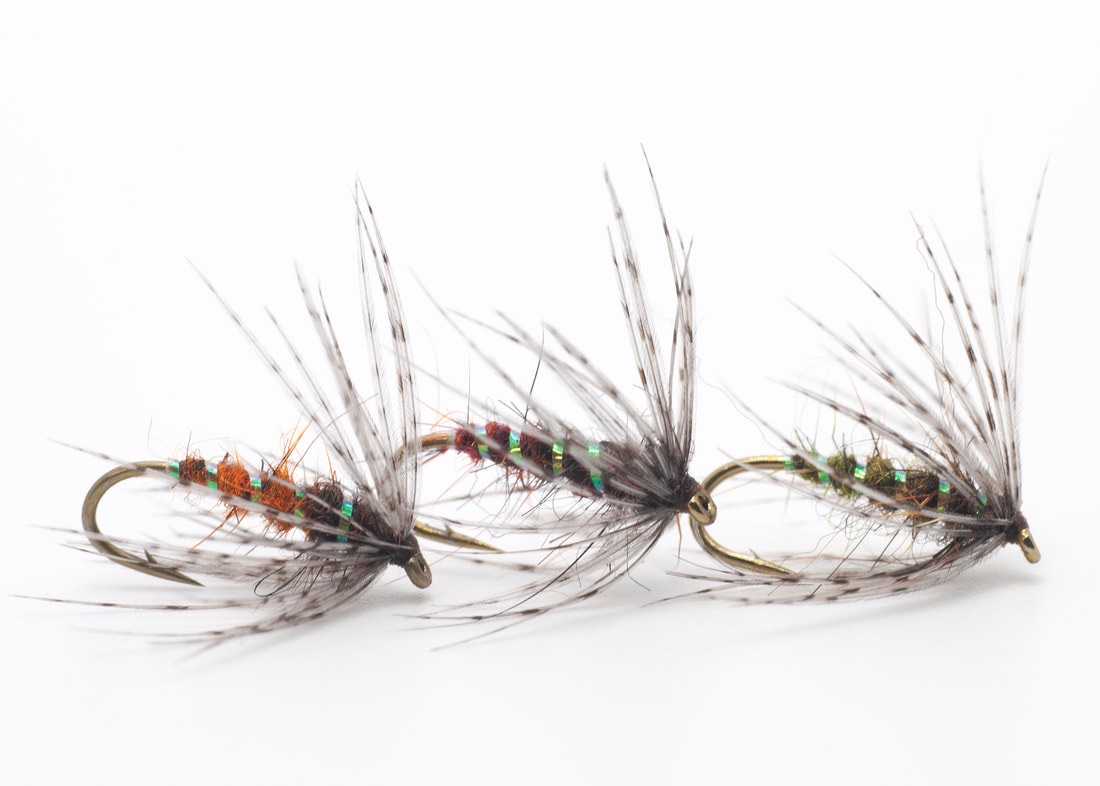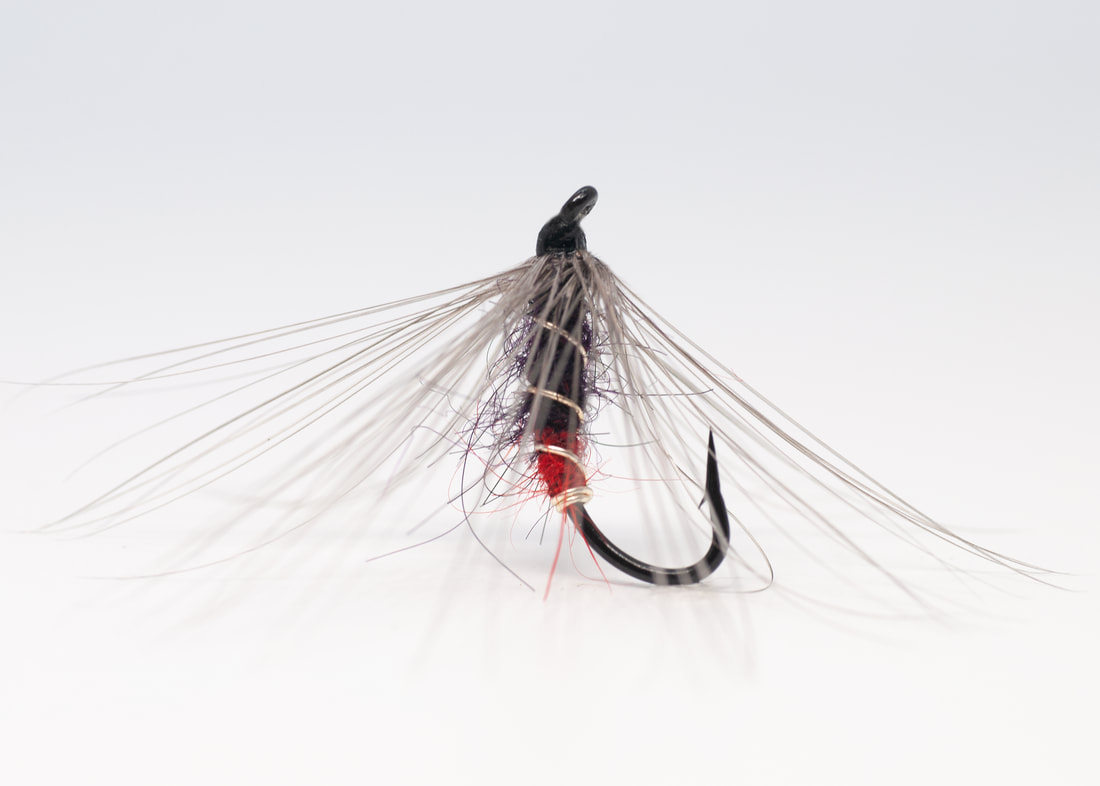I first became aquainted with soft hackled flies in the early 90's fishing the small coastal streams of Oregon while attending Oregon State University. I wanted something small, easy to tie and of course effective. Nothing served me better than a Partridge and Orange Spider. It was not until around 2000 that I discovered flymphs. I had graduated and relocated to Central Oregon and was in search of a good wet pattern to mimic the March Brown hatch on a specific section of the Deschutes River. I came across Dave Hughes' March Brown Flymph pattern. I had never had more fun fishing than with that pattern those spring months of the march brown season. I purchased Hughes' book "Wet Flies, Tying and Fishing Soft-Hackles, Winged and Wingless Wets, and Fuzzy Nymphs", 1995. After reading Mr. Hughes' book I became infatuated with wets and wet fly fishing and gradually my fishing and tying funneled that direction. I found very little resources at the time on "Flymphs". As I dug deeper I came across a copy of "The Art of Tying the Wet Fly and Fishing the Flymph" by James E. Leisenring and Vernon S. Hidy, 1971. I purchased the book for what would be considered a steal today and it was not until quite few years later did I realize the treasure I had. It is my only copy still today and is well used and worn. I love tying and fishing classic flymphs, but I also enjoy purposeful innovation. I have many of my own patterns, also many patterns where I have taken attributes of well established patterns and molded them into a flymph design. I also have quite few large flymph patterns which I have refined into fully capable steelhead wet flies. I will continue to add patterns below as I continue to tie and photograph them.
Flymph Patterns of Carl E. Sanders
Click on images for larger view
Click on images for larger view
|
Good Luck Chuck Hook: heavy salmon, #6-#10 Thread: brown Hackle: Coq de Leon saddle, medium pardo Tail: woodchuck guard hair, bleached Body: woodchuck underfur, bleached in back, dyed olive in front spun in dubbing loop Note: Steelhead or trout spey pattern. The full body is purposely designed to be fished on the swing. Forms a robust caddis pupa pattern. Also tied in smaller sizes for trout on 2x long heavy nymph hook. |
|
The Gamebird Hook: heavy salmon #6-#10 Thread: brown Hackle: english grouse, dark Tail: chuckar flank hackle fibers Body: simi seal or other fine dubbing, pale yellow in rear mixed to orange in front spun on dubbing loop Note: Think steelhead or trout spey pattern |
The Leisenring Spider Hook: Standard 2x heavy wet Thread: Pearsall's silk, primrose Hackle: partridge, brown (from the back) Rib: gold wire, fine Body: hare's ear from the base of the poll |
|
Olive Dun Hook: 2x long heavy wet Thread: Pearsall's primrose silk heavily waxed to an olive color Hackle: hen cape, medium dun Tail: hen cape fibers, light dun Rib: gold wire, fine Body: hare's mask, light dun Note: This example is tied traditionally with a pre-made dubbing strand, classic up eye hook and the signature Hidy conical head. |
|
Fade Hook: 2x long, heavy Thread: dark brown silk Hackle: partridge (dyed dun preferred) Rib: pearl tinsel, narrow Body: dubbing of choice, rear 2/3 of color, front 1/3 dark brown to black. Body is tied so the colors fade into each other without an abrupt transition Note: Orange, red, green are my favorite. I also tie a Tups and mango color. I most often use a spikey dubbing like squirrel and also like seal. |
|
Coq Spider Hook: Heavy wet hook, #4-#10 Thread: choice Hackle: Coq de Leon saddle, color of choice, long Rib: wire or tinsel Body: Seal dubbing, faded color combinations, dark in thorax Note: Patterned after the Fade series and designed for fishing on the swing. The stiffer Coq de Leon hackle pulsates in the current. Great for steelhead or trout spey. |
